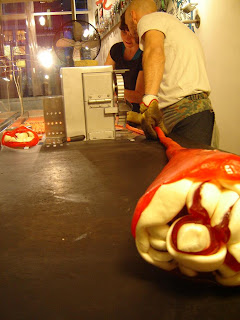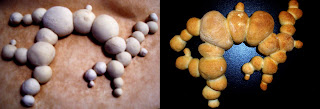Notes Sept 3 2007: manifesto issues
About technology & craft, new functionalism. need for a beeldenstorm.
The courage to explore unknown areas. What should the courage of the department be?
What could design lead to if it could go where it wants to go?
Design: an immediate, accessible, direct, democratic medium?
How to communicate the value behind design?
Can good design be invisible? Should design be recognized?
About the necessity of communicating. What is communication? Communication in public space today is often impersonal. How do LAB projects communicate to the world?
About new surroundings and the need for a safety net. Do we need a safe base, as individuals and/or as a department? Can Design Lab be a reference point / a home to its students?
Is Rietveld a protective environment? Do we want that?
The idea of a manifest on-the-go. Letting intuition play a role in guiding the work process.
About the need for things to be more human, more warm. What does being human mean to each of us?
Starting with a clean street, getting over preconceived ideas of design. How to stay open, experiment?
Speaking in LAB metaphors.. triggers images of what’s written.
About reading, how to organize a good setting for this, how to maintain discipline?
What should our LAB library look like?
About the balance between thinking and doing, how to create that balance, work towards it?
How to maintain belief in your projects? To keep a good energy with what you are doing?
Concept future agenda points: basis for design exercises?
• What should the courage of the department be? What could design lead to if it could go where it wants to go?
• How to achieve a balance between thinking and doing in projects?
• How to create a HUMAN LAB?
• What should our LAB library look like, function?
• Can we establish a LAB language, lexicon?
• Can our LAB be a temporary home?














